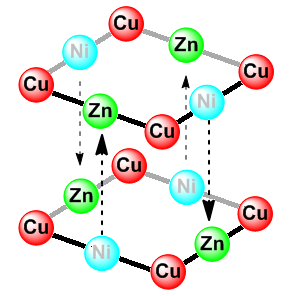
Controlling the assembly of individual molecules has always been an important goal of nanotechnology. In this work, metal ions are held within molecular scaffolds designed for the formation of nanometre-sized, hollow, cubic architectures. Our modular design scheme allows for the use of interchangeable metals and chemical functionalities, which might one day be as diverse as shape-specific synthetic catalysts, or molecular recognition sites.
The principal components of these scaffolds are porphyrins, which in nature provide one way to organise metal ions within each cell’s biomolecular machinery, and to harness their diverse chemical properties. The ability to precisely arrange such versatile subunits within a well-defined chemical environment is crucial to generating useful functionality. As a means towards developing this ability in artificial systems, molecular assemblies such as those studied here represent advances towards the ultimate goal of greatly enhanced control over chemical synthesis at the nanoscale through the use of customisable nano-reactors.

